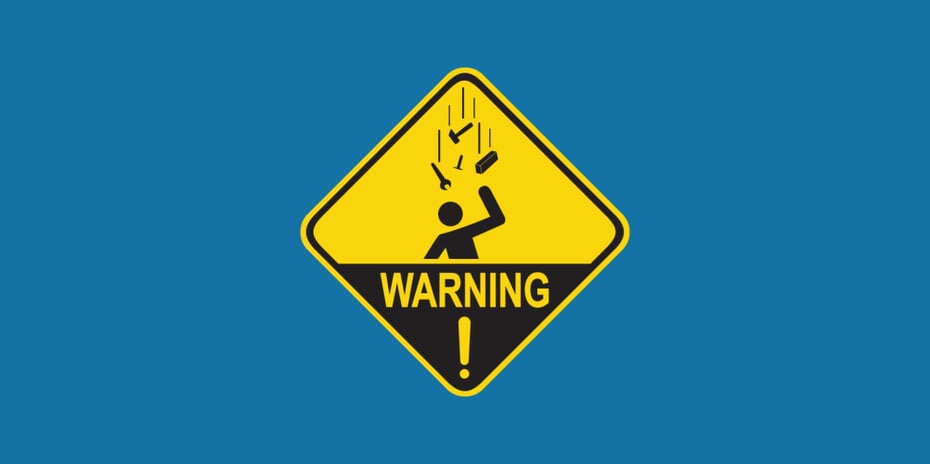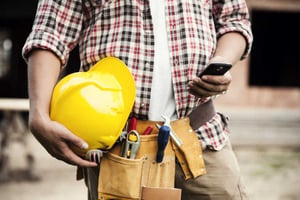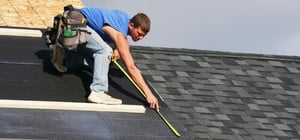According to the latest report from the Center for Construction Research and Training, the number of fatalities in the construction industry caused by “struck-by” hazards is higher than in almost any other industry. Just how serious is this issue? Between 2011 and 2015, 804 construction workers were killed across the country from injuries sustained in a struck-by accident.
Back in June, we offered tips for preventing injury as an exterior home contractor in a variety of situations. Today we’re back to provide more information on this recently released report as well as some strategies to reduce the likelihood of a struck-by accident on your job site.
A closer look at the statistics of struck-by hazards in the construction industry
52% of those who lost their lives in a “struck-by” accident were struck by a piece of equipment or some type of object. The rest were struck by vehicles. Of the 804 deaths between 2011 and 2015, 114 of them involved a car and 112 involved a truck.
Some positions within the construction industry are at a higher risk than others. For example, those working on highways, streets, or bridges made up 264 out of the 804 fatalities. Workers over the age of 65 had the highest rate of fatality from struck-by accidents. Those who work on highway maintenance, installing power lines and excavating/loading machine operators are the most likely to be involved in struck-by accidents, according to the study.
Most of these accidents were entirely preventable
These accidents are often entirely preventable. OSHA has provided a detailed guide on how to help prevent struck-by accidents caused by three specific hazards: Vehicles, falling/flying objects, and masonry walls. They note that these incidents are a leading cause of fatalities in the construction industry, and that about three out of every four struck-by fatalities involve some type of heavy equipment, whether it be a crane, truck, or another object.
Avoiding struck-by accidents caused by vehicles
Any site that doesn’t closely follow vehicle safety practices risks their workers being pinned between vehicles and walls, crushed under vehicles, being struck by vehicles, or being struck by a swinging backhoe – to name a few hazards. A comprehensive vehicle safety practices plan should include:
- A requirement to have and use seatbelts that, at a minimum, meet OSHA standards. There are of course exceptions from this requirement, including vehicles that are designed to only be used for standup operation, or vehicles that don’t have a rollover protective structure.
- Policy to prevent a vehicle from reversing if its view is obstructed unless there is an audible reverse alarm or a worker signaling that the vehicle is safe to backup.
- Checking each vehicle at every shift to make sure all of them are in operating condition.
- Only driving on roadways or grades that have been safely constructed.
- Lowering or blocking any blades, buckets, dump bodies, etc. and putting every control in neutral for equipment that is not in use.
- Double checking clearance before dumping or lifting.
- Never exceeding the rated load/lift capacity of a vehicle.
- Using OSHA approved traffic signs when working near public roadways.
No set of rules can prevent every accident but the plan above is a good starting point.
Avoiding struck-by accidents caused by flying and/or falling objects
Anyone standing under a crane or scaffold, or any type of overhead work is in danger of being injured by a flying or falling object. These injuries can be serious and result in death. General tips to prevent these accidents include:
- Requiring everyone on your job site to wear a hardhat.
- Taking protective measures, i.e. utilizing debris nets or toe boards.
- Stacking materials in a manner that minimizes the chances that it will slip, collapse, or fall.
- Requiring the use of safety glasses or goggles when workers are near machines or tools that could result in flying particles.
- Regularly inspection tools to ensure protective guards are in working order.
- Proper training for crew members on how to use equipment.
- Restricting work under moving loads.
- Inspecting cranes to ensure all components are in good condition.
- Barricading hazard areas and posting warning signs.
- Never exceeding the lifting capacity of any machine.
- Securing all tools and materials when working on the second floor.
- Never cleaning clothing with compressed air.
- Limiting use of any compressed air apparatus to a maximum 30 psi preventing any use without the right protective equipment.
Avoiding struck-by accidents on masonry walls
Building masonry walls can be especially hazardous because of the loads that must be supported. When jacks or other lifting equipment are being used to move slabs and walls, serious risks occur. The best chance to keep workers safe involves preventing the placement of loads on a structure until a qualified person who can attest to its ability to support the load has inspected it.
Shore or brace structures that aren’t yet permanently in place, and only allow workers who are essential to the project to enter the work area. Use auto holding devices that support your forms in the event that one of your lifting mechanism falls, and never overload lifting devices.
HOVER can help
One of the best defenses you have against injuries is to use the latest advances in technology. There are many tools that can be used on the jobsite, including HOVER. Use our innovative platform to eliminate the need for your crew to spend time on roofs and ladders when measuring properties. Our technology can accurately measure the exterior of a home by analyzing photos taken with your smartphone from the ground level, at a distance where you have a considerably lower risk of being the victim of a fatal construction accident.





